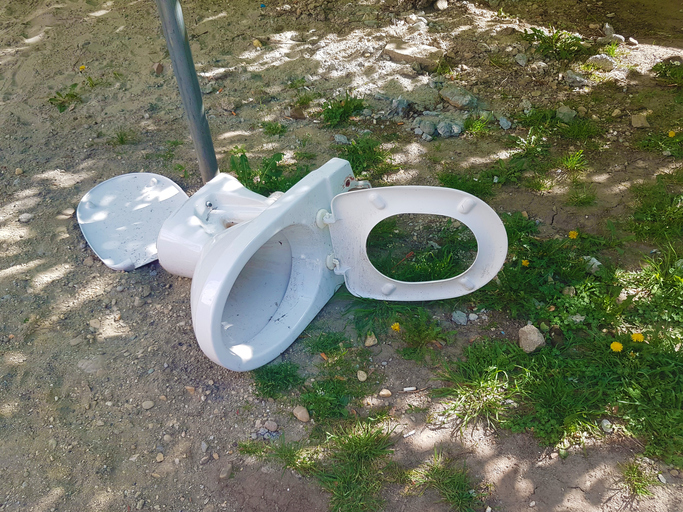Click here to Subscribe to Chips Tips Blog
Toilet Troubles: What to Know and How to Choose Your New Toilet

The typical household toilet doesn’t attract much attention until it stops working reliably.
In all our years serving the community here in Gravenhurst and the surrounding areas, we have learned that to most homeowners, there is not much worse than having to confront a temperamental toilet.
The majority of our customers would rather muck out the sump pump or clean the crawl space than tackle a backed-up toilet.
Actually, when the toilet starts malfunctioning more regularly, the key to solving your toilet troubles might just be replacement rather than repair.
In this post, find out what you need to know to decide if it is time for another repair or a full-on toilet replacement.
The Myth of the 50-Year-Old Toilet
In theory, toilets are built to last. Some sources insist that toilets have a useful life of 50 years.
Sadly, this is likely an urban myth.
The reason traces back to the low-water flush craze that began south of our border in 1994. Toilets built around this time were essentially prototype models that promised a lot more performance than they could actually deliver.
The good news is, today’s water conservation-minded toilets really do rise to the occasion. But if you have one of those earlier models, replacing it has probably already crossed your mind more than once.
5 Signs Your Toilet Is Tanking
It is important to know the difference between a temperamental toilet that simply needs repairs and a toilet that is, well, tanking once and for all.
1. Constant flushing problems
In a sense, flushing is a toilet’s main job. So when you find yourself constantly on edge wondering what will happen when you flush, you are likely close to replacement time.
2. Low water levels
Low water levels in the toilet bowl are always a signal that something is amiss. While a clog is the most common reason why water levels in the bowl might decrease, leaks can also be a potential cause.
3. Porcelain cracks
You never want to see cracks in the porcelain. Ever.
Not only is this a big warning sign that the entire structure holding your toilet upright is starting to degrade, but it also means bacteria, mould, mildew and dirt are already colonizing those cracks, making “squeaky clean” a thing of the past.
Worst-case scenario, that tiny crack widens and all of a sudden you have a water leak in your home.
4. Sweaty tank
A toilet that sweats is nobody’s friend. There are a number of reasons that your toilet tank might start sweating, ranging from missing or degrading liner insulation to flapper damage.
5. The endless flush
A toilet that starts flushing and never stops is not only wasteful and expensive, but it can also mean there are parts that are starting to wear out inside the tank. The flapper valve and fill valve are both likely culprits here.
3 Tips to Choose a Trustworthy New Toilet
There is that moment in every toilet owner’s life when it becomes clear that the days of simply trusting your toilet to do its job well are gone.
But this ushers in what can often feel like a bigger problem: how to choose a new toilet.
Today’s toilets are more sophisticated than ever. You have single unit, double unit, wall-mount, single flush, dual flush, classic bowl, elongated bowl, custom toilet seats, WaterSense-certified...the list of options and modifications seems to go on and on.
The days of calling your plumber and ordering “a new toilet” are long gone.
So how do you know what to look for in your new toilet? How can you identify the best new toilet for your needs?
While there are many fancy features available with modern toilets, only two features really matter over the long haul: seating comfort and flushing efficiency. Any toilet that can meet these two criteria is theoretically a “keeper.”
1. Bowl shape: round versus elongated
Round is the classic toilet bowl shape. A round shape is a space-saver in small spaces or guest bathrooms. However, many adults find that the newer elongated bowl shape provides greater comfort.
Before making a final decision, consider whether simply adding a custom toilet seat may meet your comfort needs adequately.
2. Flush type
In the past, all toilets flushed once and that was it. If you needed more power, you just had to flush again.
Today’s toilets offer a multitude of flush modes: single flush, dual flush, pressure-assist flush and even power-assist flush.
When you are installing a toilet in a basement, you may find some benefit from a power flush. Dual flush modes rely on the user to select the right mode for the type of waste. Pressure flush toilets can be good for heavy demands, such as a single-family toilet. Otherwise, a single flush is likely to be the most economical choice.
3. Water use per flush
There is no doubt that toilet flushes can rack up a hefty water bill. However, today’s toilets are designed to use 60 percent less water, on average, for each flush. This can easily put a cool $100 back in your pocket annually.
4. Configuration and design
Three basic toilet configurations are available today: single one-piece, two-piece and wall hanging units.
While configuration is unlikely to affect efficiency or reliability, it can impact footprint and repair costs. For example, a wall hung toilet will take up the least space in very small bathrooms.
Get in Touch
Do you need expert help selecting a new toilet that will be attractive, quiet, reliable and affordable? We can help!
Contact us online or give us a call at 1-877-885-3403.
P.S. Don’t forget to sign up to receive Chip’s Tips by email each month - it's free!

